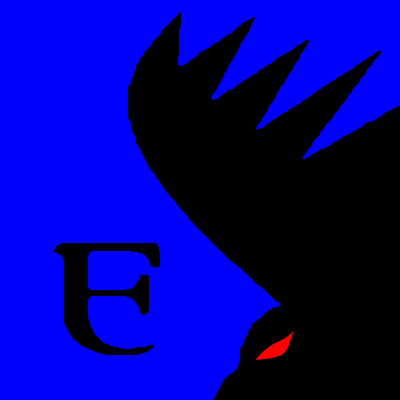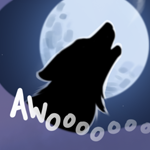- 3 Posts
- 102 Comments
Okay, I don’t get this one. There are plenty of lesbians in Homestuck, and there are plenty of time shenanigans, but who glowed when they killed people?

 2·1 year ago
2·1 year agoThe graphic novel that inspired it actually started life as a webcomic, and if I remember had on-screen deaths which the movie didn’t. Notably, Nimona is actually a killer, which may change the tone of some of her character moments for some readers.
 4·1 year ago
4·1 year agoThe Whispering Way wants nothing less than the death (and undeath) of all living things on Golarion. In the shorter term, many members of the whispering way want eternal unlife and/or great power for themselves.
This presents a couple of potential motivations for agents of the Whispering Way:
They might seek to expand the Eye of Abendego, causing massive death and destruction in the Shackles, Rahadoum, and the Sodden Lands.
They might want to raise an army of powerful aquatic undead from beneath the storm for whatever other purposes, including the above.
Most esoterically, the Eye of Abendego appears to be linked in some way to the death of Aroden.
Before Aroden was a god[edit: Aroden had already been a god for hundreds of years by this point], and before Tar-Baphon, the Whispering Tyrant, was a lich, they fought each other on the Isle of Terror in a trap Tar-Baphon had set for Aroden. Tar-Baphon lost the fight and was slain.Tar-Baphon is neither the founder nor a particular object of worship for the Whispering Way, but he is easily their most powerful member, their overall leader (though the Whispering Way is fractious, so that doesn’t mean much), and by far their most successful member in pushing their objectives.
All this is to say that the Whispering Way might have some particular interest in the dead god Aroden, and might try to harness the power of the Eye of Abendego to try to bring back Aroden as some form of undead god. Whether this is something they can realistically achieve is up to you, of course, but it doesn’t need to be possible for some of them to get the bright idea to try it.
Of course, they could also simply try to absorb some of the power of the Eye for their own uses elsewhere.

 4·1 year ago
4·1 year agoIt’s always been normal to me. I tend to get a bit annoyed when webcomics don’t have their own site.

 1·1 year ago
1·1 year agoHey, it got me linked through to your site, so that’s a win, right?

 3·1 year ago
3·1 year agoI read that book!

 161·1 year ago
161·1 year agoFuck purity culture.

 2·1 year ago
2·1 year agoYou should probably state the system(s) this is made for in the title or very near the top of the post.

 3·1 year ago
3·1 year agoYuuup. Hey, look at this cool We Be Goblins adventure Paizo did for Free RPG Day. Why don’t I run that? What’s this? An adventure hook in the back of it for one of their Adventure Paths? Sure, I’ll run that. Skip to five years later and I’m half-way through running another Adventure Path and I’ve done several other shorter adventures besides.
That said, I’m not the only member of our group that GMs, just the most reliable.
Vriska was a lame-ass removed who was immune to consequences, and everyone worshipped her for it.

 2·1 year ago
2·1 year agoI find Paizo’s Adventure Path line of products to be really good. I frequently tweak encounters, sometimes brewing my own NPCs for them, and occasionally add my own scenarios to bulk them out or elaborate on something that wasn’t detailed in the AP. The actual stories I don’t often touch, however. I’ve yet to really need to.

 71·1 year ago
71·1 year agoA party can definitely be too powerful for the narrative you want to tell. If you’ve got a specific story with specific challenges in mind, then players can have abilities that can render those challenges moot.
Using Pathfinder as an example, but this would apply to several related systems too: You have some kind of ravine or other traversal challenge. Prior to gaining access to fly, the players need to use their skills to find whatever solution you’ve seeded into the world or come up with some creative solution you haven’t thought of yet. After gaining access to fly, they can simply fly across, nullifying the challenge.
All this is to say that in certain systems, it’s not simply the numbers but the nature of challenges that change as you gain power. A high-level party tells different stories than low-level parties (this isn’t an accident, it’s a feature), and if that’s not the kind of story the GM wants to tell, it can be a problem. Arguably, however, that’s something the GM should have been aware of when going into a system like DnD or Pathfinder and been prepared to raise the stakes to entirely different kinds of challenges.

 1·1 year ago
1·1 year agoI once encountered a greater mimic pretending to be a cottage in the middle of the woods. It got us close enough to peer in its “windows” before it started attacking.
There are no DCs. Each player chooses a number between 2 and 5 to represent their characters’ aptitudes. High means they’re better at Lasers “(technology; science; cold rationality; calm, precise action)”, and low means they’re better at Feelings “(intuition; diplomacy; seduction; wild, passionate action)”. The GM only needs to decide which of those two any action is (they need to roll under their number to succeed at Lasers, and over their number to succeed at Feelings), and also whether the character is prepared (based on the situation), or an expert at the subject (based on their characters’ chosen expertise), and for each one they get an extra die. The target number is always the player characters’ own chosen number.


Thanks.